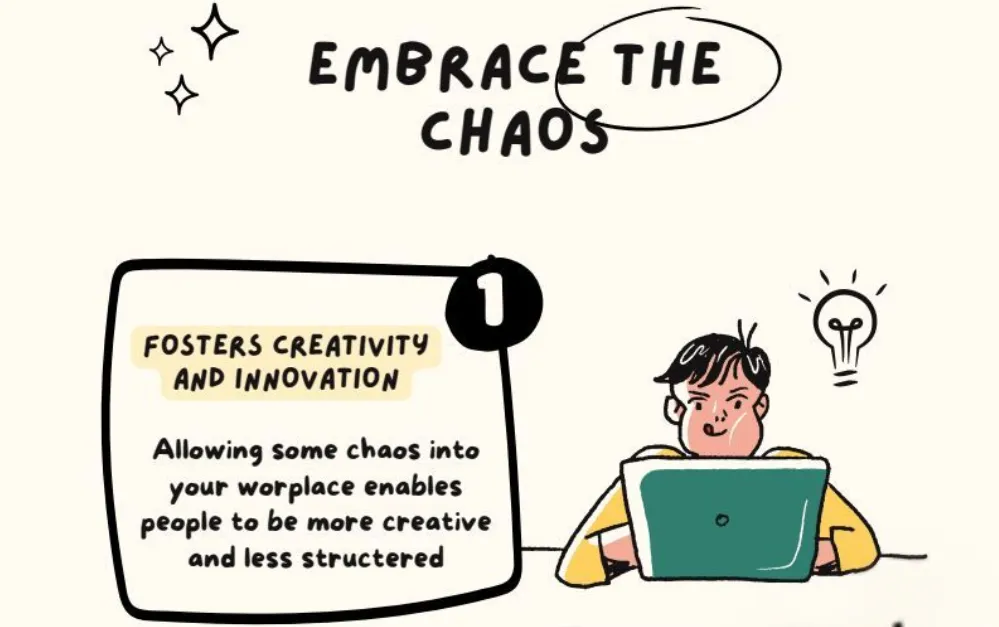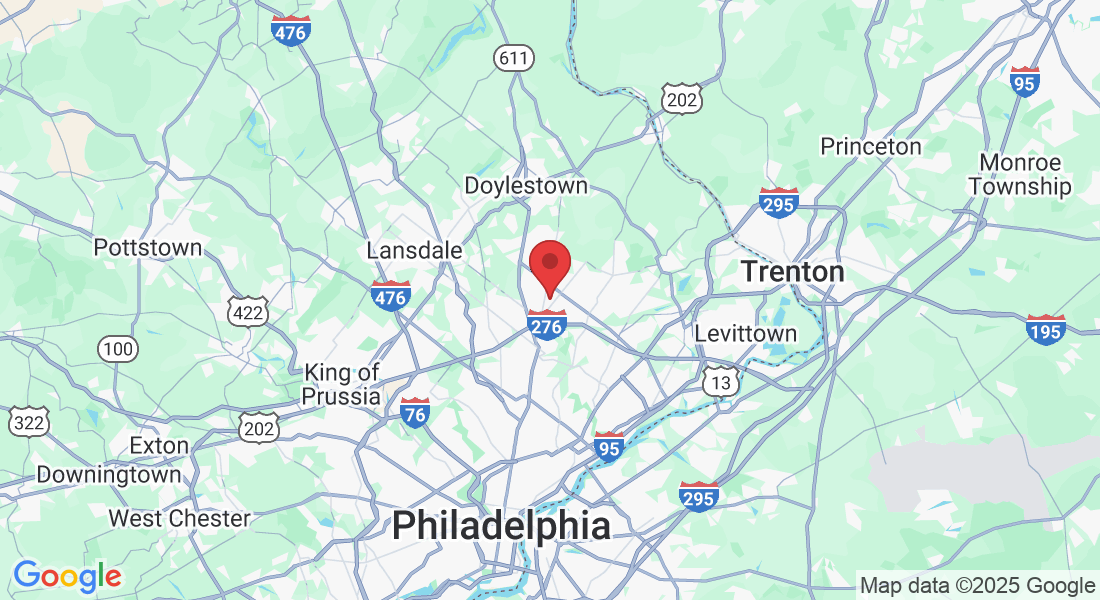
Benefits of Organized Chaos in Business
Usually, chaos is something to be avoided. But sometimes, organized chaos can be a good thing, especially in business. Chaos is typically seen as negative, where structure and order are valued. However, the idea of "organized chaos" can serve as a force when it's controlled and intentional.
Benefits of Organized Chaos in Business
In some cases, especially in fast-moving, innovative companies, a certain level of chaos can fuel ideas and help with quick decision-making. Here's how organized chaos can work in business:

Fosters Creativity and Innovation
When everything is rigid and tightly controlled, people often fall into routines. While that might be efficient, it doesn't always leave much room for creative thinking. In contrast, organized chaos allows people to be creative and explore new ways to solve problems or capitalize on opportunities. It's that messy stage where ideas are thrown around; some may fail, but others can lead to breakthroughs.
For instance, tech companies and startups often thrive in environments that might look chaotic from the outside. There's less structure, a work environment that is open to working together, and teams that are used to handling multiple projects. The pace is hectic, but the flexibility encourages creative solutions.
Encourages Adaptability
In today's market, adaptability is a valuable asset. Businesses that can pivot quickly when conditions change have a significant advantage. Organized chaos—when managed well—can make a company more agile. For example, if you operate in an environment that embraces some level of chaos, your team gets used to handling unexpected situations, switching gears, and staying cool under pressure.
I spent my career in the retail auto industry. You rarely find a business where chaos thrives more than a new car dealership. No one comes through the door; the next day, there are more people in the store than salespeople.
How to Manage Organized Chaos
While chaos can bring advantages, it's only beneficial when it's "organized" and not just outright disorder. Here are a few tips for keeping it productive:
Clear Objectives: Make sure everyone understands the end goal. Chaos might exist, but clarity about success helps keep people on track.
Flexible Structures: Have systems in place that are adaptable. Allow your team to work within frameworks that give them some flexibility.
Trust in Your Team: In chaotic environments, leadership must allow employees to make decisions. Managing chaos defeats the purpose.
In summary, organized chaos is good for business, provided it's used intentionally. It encourages innovation and a proactive team culture, but only if there's a balance between chaos and structure. If you can create that sweet spot, your business can thrive in situations where others struggle to stay afloat.
Examples of Businesses That Have Successfully Organized Chaos
Several companies are known for organized chaos as a core part of their culture and operations. These businesses thrive in environments that are fast-paced and open to change. Here are some real-world examples of companies that use organized chaos to fuel success:
Google is a prime example of a company that embraces organized chaos, especially in its early years. Known for its flat organizational structure and focus on innovation, Google has historically given employees significant freedom to pursue their projects.
One of the most famous examples is Google's 20% time policy, which allows employees to spend 20% of their time working on projects outside their core job responsibilities. This structured chaos enabled the birth of some of Google's most successful products, like Gmail and Google News. By creating a culture where employees are encouraged to experiment, take risks, and pursue creative ideas, Google has built an environment that thrives on organized chaos.
Tesla
Tesla, led by Elon Musk, is another example of a company that embraces a high degree of organized chaos. Musk's leadership style often pushes boundaries, expecting teams to work quickly and solve complex engineering problems under tight deadlines.
Tesla's rapid pace of innovation in electric vehicles and battery technology thrives in this high-pressure, chaotic environment. The company's ability to pivot quickly and take bold risks has led to breakthroughs in the automotive and energy sectors. While this intense environment may not be for everyone, those who thrive in it can often thrive and perform a very high level, resulting in game changing innovations.
Amazon
Amazon's approach to organized chaos is driven by its "Day 1" philosophy, which Jeff Bezos introduced to ensure that the company remains agile and innovative, no matter how big it gets. Amazon encourages employees to act like it's still Day 1 of a startup—meaning they should think fast, experiment often, and avoid getting bogged down by bureaucracy.
Amazon has also been known to embrace a "two-pizza team" structure, where teams are intentionally kept small enough to be fed by two pizzas. This helps maintain a fast-paced, chaotic, yet productive environment where teams can innovate and move quickly. Even as Amazon has grown into a corporate giant, it holds a culture that embraces organized chaos, especially in logistics, cloud computing, and retail innovation.
How These Companies Balance Chaos and Structure
What sets each of these companies apart is their ability to embrace chaos in a controlled and productive way. They encourage creativity and allow their teams the freedom to think outside the box. They understand that while too much chaos can be counterproductive, structured chaos—where there's room to experiment, adapt, and innovate—can drive incredible results.
Partner With DLW Dynamic Leaders to Launch Your Business Success
As a businessman and successful business owner, I know the knowledge of running and scaling a business can be hard-won. Our goal is to use our own hard-won knowledge to help new entrepreneurs get through the struggles of new business ownership so they turn their own business ideas into the successful enterprises they can be. Clients get to ask the real questions that are holding them back, and get real answers from someone who has already succeeded. To learn more about the benefits of organized chaos and other new business challenges, as well as how DLW Dynamic Leaders can help you succeed, contact us to schedule a consultation today. Small steps lead to big results, and the sky's the limit!


